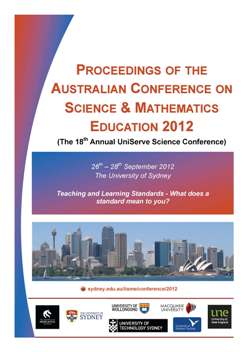Targeting key student attributes: using POGIL in a senior undergraduate class to develop spatial reasoning
Abstract
Group theory, as a branch of mathematics, can systematically describe molecular properties that are influenced by their three-dimensional symmetry. This topic often forms part of a senior undergraduate chemistry curriculum, where it is used to explore chemical bonding and vibrational spectra. This approach requires rapid manipulation of representations of molecular-scale three-dimensional phenomena to apply the principles of group theory and interpret the outcomes. Students utilise spatial reasoning to achieve this manipulation, which is often conceptually challenging. The literature suggests this challenge may confound learning and lead to student disengagement. Spatial reasoning was identified as a desirable attribute of our Chemistry graduates, and integrated into our curriculum. To overcome student disengagement, Process Oriented Guided Inquiry Learning (POGIL) was used as a model pedagogy, where students work through a carefully structured activity in small groups. The paucity of existing materials required development of new POGIL resources, which will be illustrated. An existing instrument, the Purdue test of visualisation of rotations, was used to measure one aspect of spatial reasoning. Using the results of this test, observations from the class and results from student assessment, we can begin to demonstrate how students attain this key attribute.Downloads
Published
2012-08-24
Issue
Section
Abstracts
